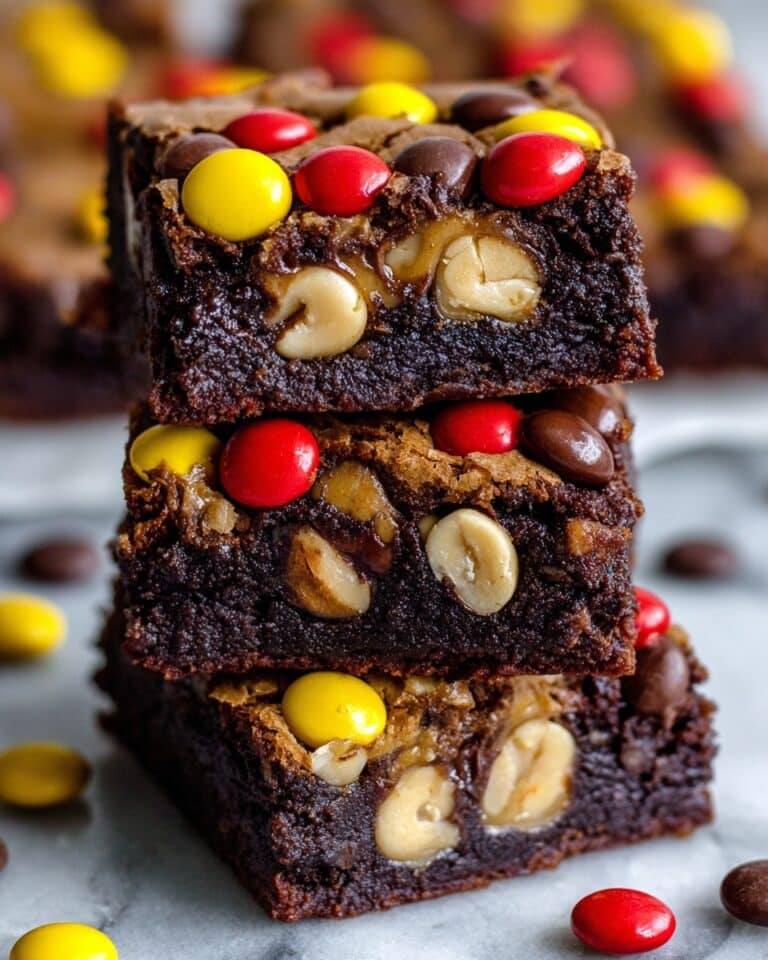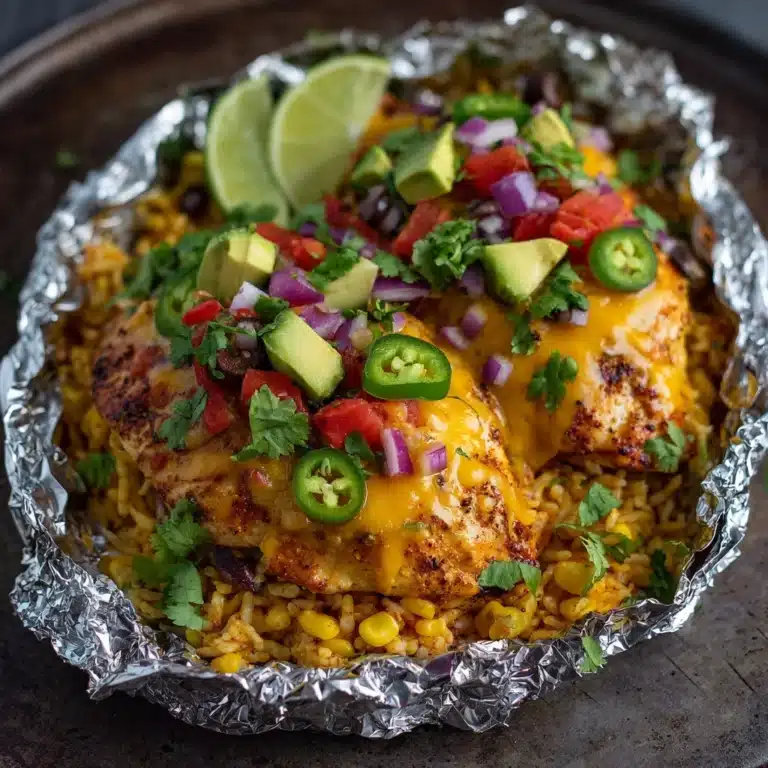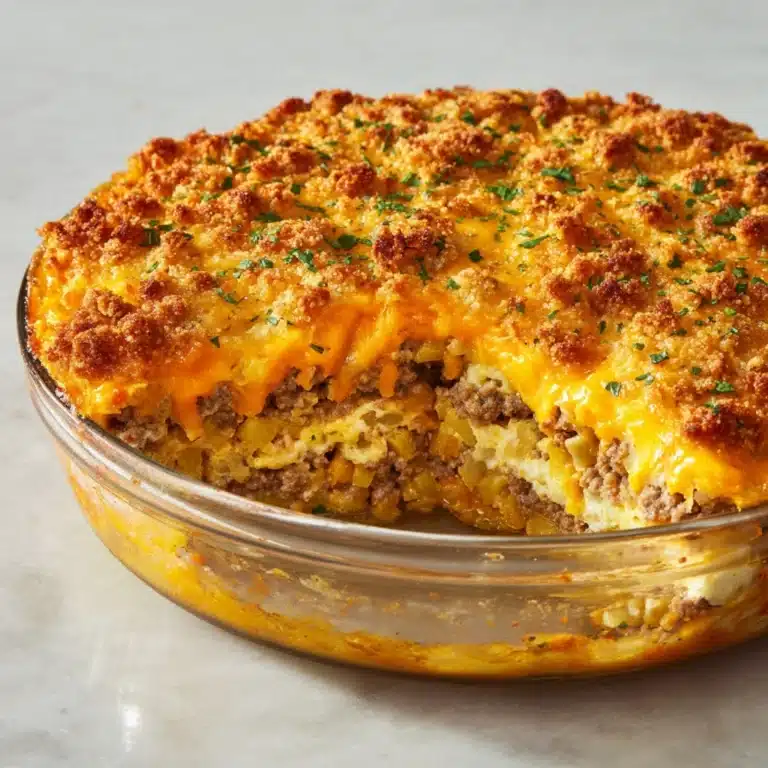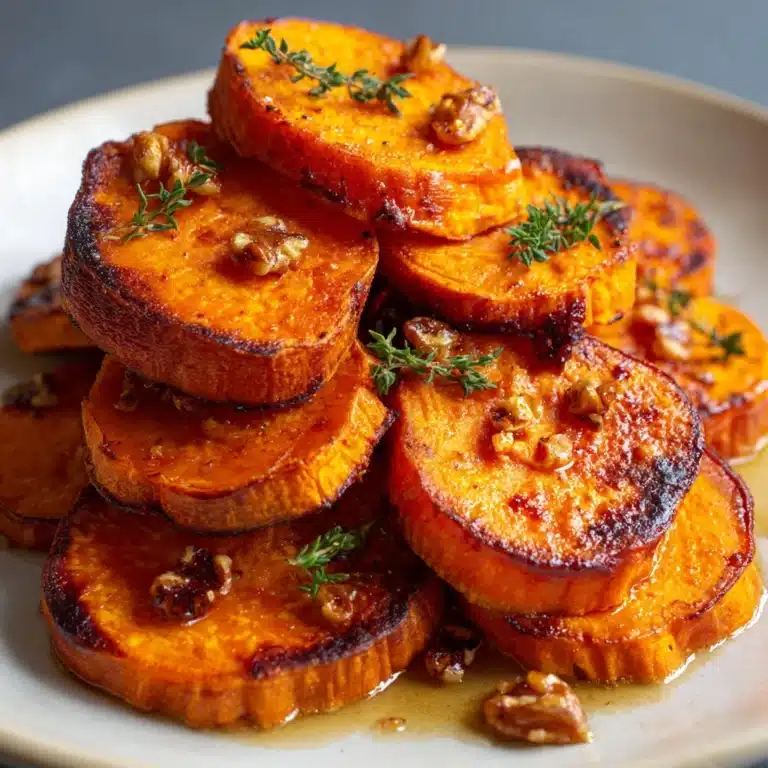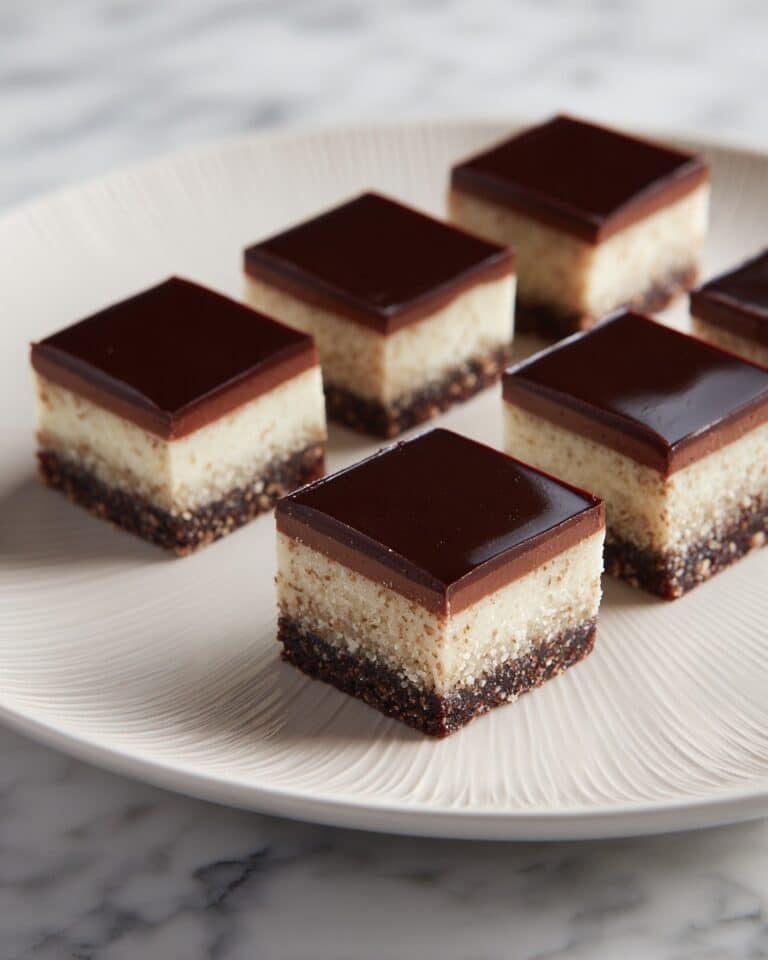Mango Sticky Rice Recipe
Imagine a dessert that encapsulates sunshine, comfort, and tropical delight all at once—Mango Sticky Rice is exactly that. This classic Thai treat is a celebration of soft, chewy glutinous rice soaked in creamy-sweet coconut milk, paired with juicy, ripe mangoes. The combination delivers vibrant flavors, a beautiful contrast of textures, and a wow-factor presentation that always steals the spotlight at any dinner table. Whether you’re familiar with Thai desserts or trying something new, Mango Sticky Rice is an unforgettable way to experience pure culinary joy.

Ingredients You’ll Need
You’ll be amazed at how simple this ingredient list is, yet each item plays an essential role in creating the unique taste and dreamy texture of Mango Sticky Rice. These basics are the foundation that transforms every bite into a mini tropical vacation.
- Glutinous (sweet) rice: The heart of Mango Sticky Rice, this rice is what gives the dessert its signature chewy, sticky texture—regular rice just won’t do!
- Coconut milk: Full-fat coconut milk brings rich, velvety creaminess and that unmistakably nutty sweetness—opt for the good stuff for best results.
- Granulated sugar: This completes the coconut sauce with gentle sweetness, perfectly balancing the tang of fresh mango.
- Salt: Just a touch of salt sharpens all the flavors and adds depth to the coconut mixture.
- Ripe mangoes: Choose fragrant, golden-fleshed mangoes for the juiciest, sweetest bite—they are the stars of every plate.
- Toasted sesame seeds or mung beans (optional garnish): A sprinkle of these adds crunch and a hint of nutty aroma, making each serving extra special.
How to Make Mango Sticky Rice
Step 1: Prepare the Rice
Start by rinsing your glutinous rice in cold water several times until the water runs clear; this step removes excess starch, which is key for the perfect sticky texture. After rinsing, leave the rice to soak in cool water for at least 4 hours or, for the softest experience, overnight. When you’re ready, drain the rice and steam it in a lined steamer basket for 25 to 30 minutes, until every grain is translucent and tender.
Step 2: Make the Sweet Coconut Sauce
While your rice is steaming to perfection, put together the luscious coconut sauce. Combine coconut milk, sugar, and salt in a small saucepan over medium heat, stirring gently. The goal is to dissolve the sugar and salt, infusing the coconut milk with sweetness and a touch of savoriness—be sure not to let it boil, as this can affect the texture.
Step 3: Combine Rice and Coconut Sauce
Once the rice is done, transfer it to a large mixing bowl. Pour about two-thirds of your sweetened coconut milk over the hot rice (reserve the rest for later drizzle). Using a spoon or rice paddle, gently stir until each grain is bathed in coconut goodness. Cover the bowl and let the rice sit for 15 to 20 minutes, giving it time to absorb all that flavor and become delightfully creamy.
Step 4: Assemble with Mangoes and Serve
When it’s time to eat, arrange the sticky rice on plates alongside generous slices of ripe mango. Finish each serving with a drizzle of your reserved coconut sauce for extra richness, then sprinkle over toasted sesame seeds or mung beans if you like a playful crunch. Mango Sticky Rice is best enjoyed warm or at room temperature, showcasing the full spectrum of sweet, creamy, and fruity delights.
How to Serve Mango Sticky Rice

Garnishes
Bring your Mango Sticky Rice to life with a flourish of garnishes. Whether it’s a handful of toasted sesame seeds or the subtle earthiness of crispy mung beans, a simple sprinkle elevates both the look and the flavor. For a fancier touch, consider a mint leaf or a curl of lime zest for vivid color contrast.
Side Dishes
If you’re serving Mango Sticky Rice as part of a larger meal, keep sides light and fresh to let the dessert shine. Thai iced tea or coconut water are perfect sips, while a small fruit platter rounds things out with color and variety without overpowering the main attraction.
Creative Ways to Present
For a dinner-party twist, shape the sticky rice using a mold or your hands for neat, petite rounds. Fan mango slices in a blossom pattern across the plate, or layer the rice and mango in parfait glasses for an elegant, modern look. However you serve it, Mango Sticky Rice always turns heads!
Make Ahead and Storage
Storing Leftovers
If you find yourself with extra Mango Sticky Rice, store the rice and mangoes separately in airtight containers in the refrigerator. The rice will firm up as it cools but will stay fresh for up to two days. As always, this dessert tastes best enjoyed the day it’s made!
Freezing
Freezing sticky rice isn’t ideal, as the texture can change once thawed. If you need to, freeze the rice only (without coconut sauce or mango) in a well-sealed bag. To serve, steam from frozen until heated through, then continue with the coconut milk and mango.
Reheating
To bring refrigerated rice back to its soft, chewy self, sprinkle it lightly with a bit of water and steam or microwave until just warmed through. The coconut milk can be gently rewarmed in a saucepan. Always add fresh mango and toppings just before serving for the tastiest results.
FAQs
Can I use regular rice instead of glutinous rice?
For authentic texture and flavor, glutinous rice is essential—it becomes sticky and chewy, forming the perfect base for Mango Sticky Rice. Regular rice just won’t have the same magic!
Is Mango Sticky Rice gluten-free?
Yes! Glutinous rice contains no gluten, despite its name. When prepared as described, this dessert is completely gluten-free and suitable for most dietary needs.
Can I use canned or frozen mango?
If fresh mango isn’t available, frozen mango is the next best alternative. Let it thaw and pat dry before serving. Canned mango can work, but look for versions with no added sugar to avoid overly sweet results.
What can I substitute for coconut milk?
While coconut milk is traditional, you could use other plant-based milks, but the creamy and aromatic character of Mango Sticky Rice will be less pronounced. Full-fat canned coconut milk is truly the best option!
How do I prevent the rice from becoming too sticky or mushy?
Rinsing and soaking the rice are crucial. Be sure not to oversteam or overmix after adding coconut milk—gentle handling produces perfectly sticky, not mushy, grains every time.
Final Thoughts
If you’ve never experienced the magic of Mango Sticky Rice, now’s the time! This recipe is as joyful to make as it is to eat, bringing a bit of tropical sunshine to any occasion. Dive in, experiment with your favorite garnishes, and discover why this beloved Thai classic deserves a place in your dessert repertoire!
Print
Mango Sticky Rice Recipe
- Total Time: 40 minutes (plus soaking time)
- Yield: 4 servings 1x
- Diet: Gluten-Free, Vegan
Description
Indulge in a taste of Thailand with this delightful Mango Sticky Rice recipe. Sweet glutinous rice is steamed to perfection and infused with a rich coconut milk sauce, then served with fresh mango slices for a tropical twist. A sprinkle of sesame seeds or mung beans adds a delightful crunch to this classic Thai dessert.
Ingredients
Sticky Rice:
- 1 cup glutinous (sweet) rice
- Water for soaking
Coconut Sauce:
- 1 ½ cups coconut milk
- ½ cup granulated sugar
- ½ teaspoon salt
Additional:
- 2 ripe mangoes, peeled and sliced
- 1 tablespoon toasted sesame seeds or mung beans (optional garnish)
Instructions
- Rinse the Sticky Rice: Rinse the sticky rice in cold water until the water runs clear. Soak in water for at least 4 hours or overnight.
- Steam the Rice: Drain the soaked rice and steam in a lined basket for 25–30 minutes until tender.
- Prepare the Coconut Sauce: Heat coconut milk, sugar, and salt in a saucepan until sugar dissolves; do not boil.
- Combine and Rest: Mix cooked rice with coconut sauce. Let it sit covered for 15–20 minutes.
- Serve: Serve sticky rice with mango slices, drizzle with coconut milk, and sprinkle with sesame seeds or mung beans.
Notes
- For extra richness, use full-fat coconut milk.
- Best consumed on the same day as the rice can firm up in the fridge.
- Prep Time: 10 minutes (plus soaking time)
- Cook Time: 30 minutes
- Category: Dessert
- Method: Steaming
- Cuisine: Thai
Nutrition
- Serving Size: 1 portion with mango
- Calories: 320
- Sugar: 25 g
- Sodium: 160 mg
- Fat: 11 g
- Saturated Fat: 10 g
- Unsaturated Fat: 1 g
- Trans Fat: 0 g
- Carbohydrates: 54 g
- Fiber: 2 g
- Protein: 4 g
- Cholesterol: 0 mg
